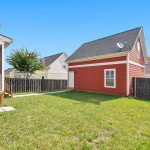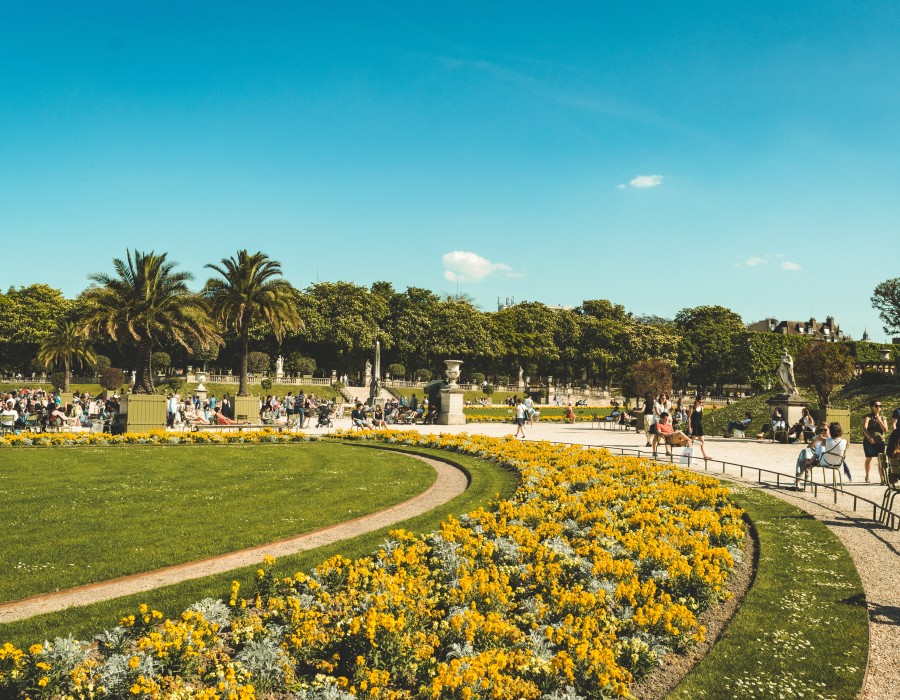All designs, whether in the landscape, on a poster, or in a magazine, employ common composition tools that give structure to the design. Landscapes are a way to bring life to your house’s empty yard. There are multiple elements of a landscape like softscape, hardscape, and lighting. However, the quality of your garden is determined by a landscape design in Parker. A design has various elements that together facilitate the execution of the plan. These design aspects generally include color, form, line, texture, and scale. They help create a one-of-a-kind experience by modifying the space.
While the color and the texture add richness to a design, mass, form, and line are important for allocating space and ensuring everything is properly arranged. So, to make a better design, let us understand the 4 key elements of a landscape design:
- Line
Lines are used for restricting movement in landscaping, such as a sidewalk, path, or flower bed. The line has two roles to play. One, it guides the viewer's eye around your beautiful landscape and the second is that it creates physical movement and connectivity. Vertical lines help to expand the limited space in rooms. Did you know that lines can be representative? Yes, they can be. It is said that straight lines depict an official and straightforward landscape design, whereas curved lines are relatively gentler and include more softscape elements like plants, shrubs, and flowers.
Lines also draw the viewers’ attention to special design features such as a pond, pool, or fire pit. Lines in a landscape design work similar to borders on a piece of canvas. That is, it lets you mark spaces and use those spaces accordingly.
Lines play an important role in designing flower beds and walkways, as well as when selecting hardscape items such as fences.
2. Form
You might ask, what does form mean? The shape of a plant or a hardscape element is referred to as its form. As we know that plants come in all sorts of shapes and sizes, including erect, bushy, spherical, freeform, etc. On the other hand, hardscape forms come in a variety of designs, heights, and shapes, such as stone walkways, retaining walls, and fountains. A formal garden for an office, for example, may have more structured, shaped bushes, whereas an informal domestic yard might include more natural and different colors of flowers. The combination of forms dictates the groundwork for the landscape design.
When a design composition is considered as a whole, the individual forms of each element become subordinate to the composition's overall form.
3. Color
Color is the most commonly used element in landscape design composition. There are countless shades to play with. Reds, yellows, and oranges are examples of warm colors whereas blues, greens, and purples are examples of cool hues. The visual impact of warm and cold color combinations on the landscape can be different, depending on your form and house design. Color is a significant design factor for both softscape and hardscape. While choosing a color for your landscape, keep in mind all four seasons. For example, you might not like yellow shades when it gets too hot in summer. While flowers and plants of all colors create an excellent summer garden, you should also include seasonal vegetation that will provide colors throughout the season. Moreover, items, such as evergreens, conifers, and holly will be there in all seasons and their color composition is pleasing. Hence, the color of the landscape is very important in landscape design.
4. Scale
Scale in a landscape design denotes the size ratio between garden items and the surrounding environments. The scale of your design will be appropriate as long as you pick elements that appropriately fit. Make sure your walkways are spacious. To scale your elements properly, consider the size of your home as well as the available space. Using a combination of different heights and widths improves the overall design composition, making sure it does not look boring.
Designing a landscape comes with a lot of effort. Like various design options for a stamped driveway in Castle Rock, landscaping has a plethora of wonderful combinations. There are endless design options as there are several elements, like hardscape, softscape, and lighting. To bring out the best, the landscape design must include all the mentioned elements.






Comments